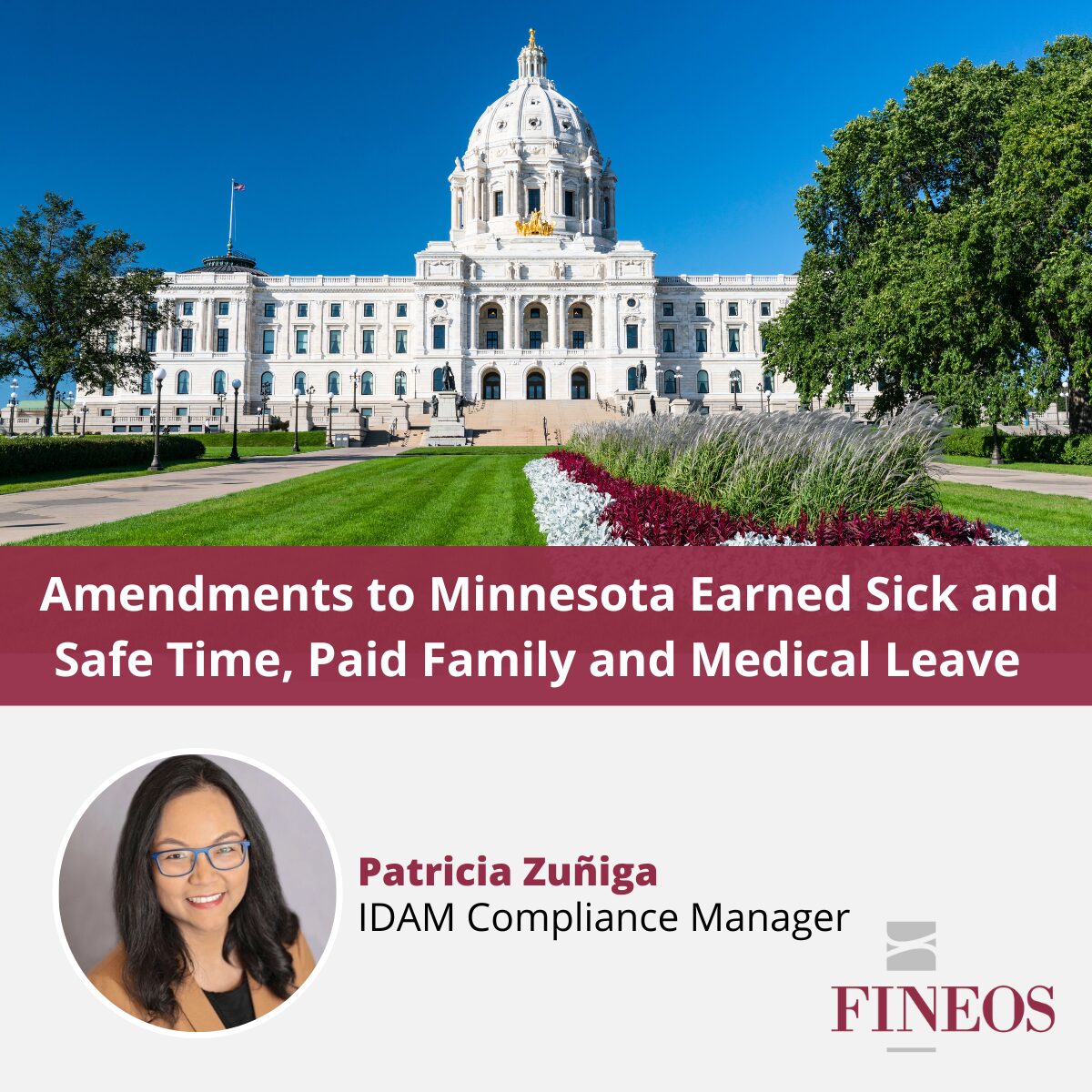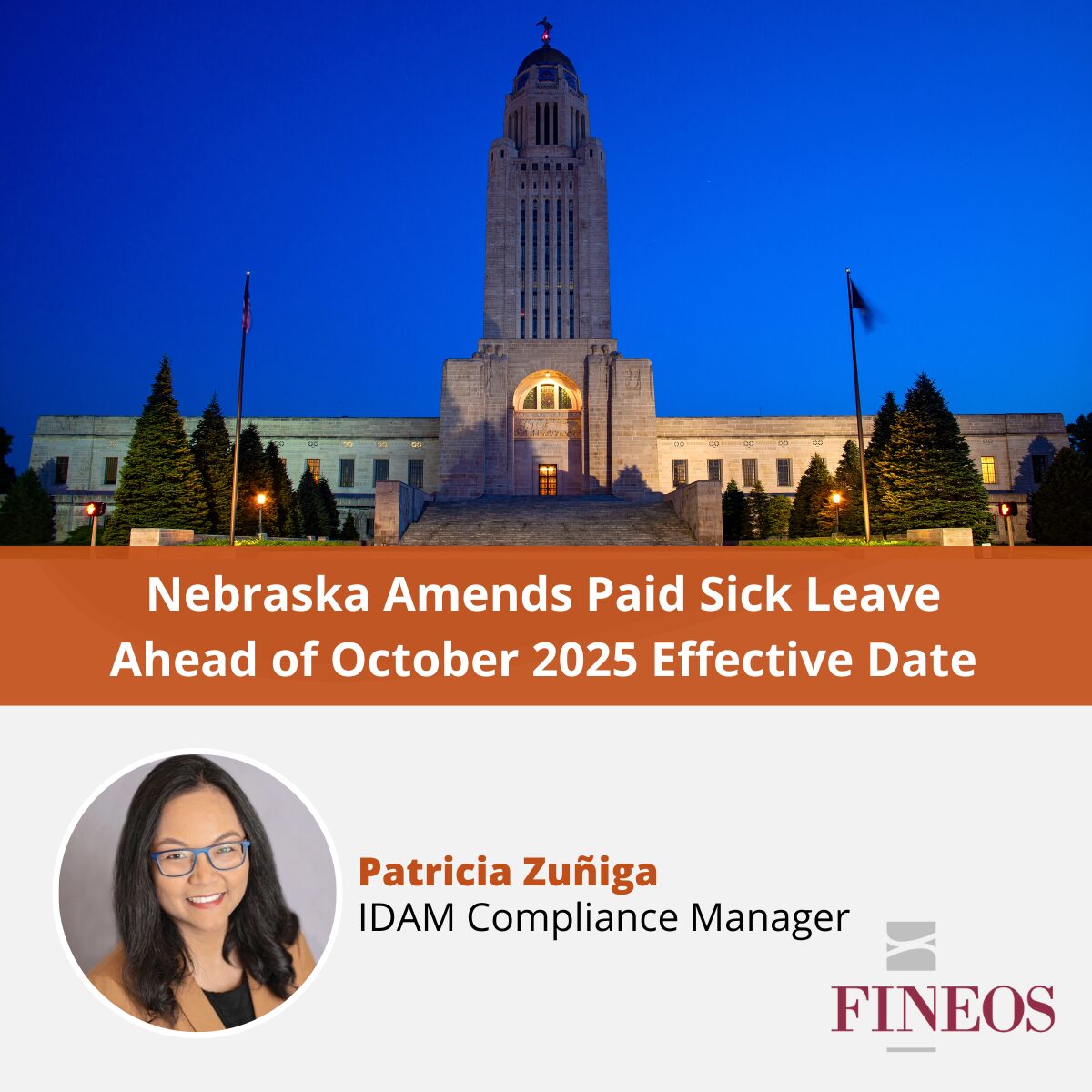Last year, the Commonwealth of Massachusetts passed a new Paid Family and Medical Leave (“PFML”) program. On June 14, the Governor of Massachusetts signed Senate Bill 2255 giving employers some breathing room to prepare for the new PFML program, which is still slated to begin paying benefits on January 1, 2021. The bill delays the payroll tax contributions to fund the program from the original date of July 1 to October 1, 2019. The contribution rate has been adjusted upward to account for the shorter period for collections that will result from the three-month delay from 0.63% to 0.75% of employee qualifying earnings. This adjustment is intended to ensure that the program is fully funded in time for the start of benefit payments in January 2021.
Employers now have until September 30, 2019, to notify covered individuals of their rights and obligations under PFML. Updated notices will be published here: mass.gov/pfml. According to the Department of Family and Medical Leave (“Department”), if an employer already provided written notices to its workforce prior to the delay announcement, the employer will need to provide a rate update sheet (located on the Department website) explaining the new dates and contribution rates.
Employers that offer paid leave benefits that are at least as generous as those required under the PFML law can apply to the Department for an exemption from making contributions. The amended law gives employers until December 20, 2019, to apply for an exemption.
The amendment also adds a few clarifications to the law, including:
- Serious Health Condition: The amendment clarifies that to qualify for leave, an employee’s serious health condition must “make the covered individual unable to perform the functions of the covered individual’s position.” For a former employee, that employee must be “unable to perform the functions of the covered individual’s most recent position or other suitable employment.”
- Certification: Reflecting the change above, a medical certification from a health care provider must contain a statement that the individual is unable to perform the functions of the covered individual’s position. For employees who request leave on an intermittent or reduced schedule basis, the health care provider must certify the medical necessity and expected duration for the intermittent leave or reduced leave schedule.
In addition to the statutory amendment, the Department has issued Final Regulations. The final regulations don’t alter the latest draft regulations substantially, but they provide clarity in a few areas:
- Definition of Child. The final regulations remove the requirement that a child for which the employee is taking leave be under 18 or incapable of self-care due to a disability. According to the new rules, an employee can take leave to care for an adult child.
- Definition of Incapacity. Reflecting the statutory changes above, this definition has been clarified, such that incapacity must include “an inability to perform the functions of one’s position, or where the covered individual is a former employee, to perform the functions of one’s most recent position or other suitable employment.”
- Increments of Time. An employer can require that intermittent leave be taken in designated minimum increments, but the minimum increment cannot be greater than four consecutive hours.
- Average Total Workforce Count. The final regulations specify that certain individuals must be counted towards the employer’s average total worker count, including:
- individuals for which an employer or covered business entity is required to report the payments on the IRS Form 1099-MISC; and
- self-employed individuals, if the employer’s average total workforce consists of more than 50% self-employed individuals, when the employer is required to report payment to the self-employed individuals on an IRS 1099-MISC.
- Varying Pay Deductions. The final regulations add that an employer or covered business entity can choose to deduct differing percentages from the wages or qualifying payments of different groups of covered individuals, but it may not deduct more than the maximum percentages from any employee or covered contract worker.
- Private Plan Provisions. The final regulations add the following for private plans:
- An employer or covered business entity offering PFML benefits through a private plan can submit an application for approval to the Department no more frequently than once per quarter;
- Employers and covered business entities with approved private plans must retain all reports, information, and records related to the approved plan, including those related to all claims for benefits made under the plan, for three years, and must furnish them to the Department upon request;
- Benefits and benefit eligibility under an approved private plan must be maintained for all covered individuals until the effective date of termination or non-renewal of the approved private plan. An employer or covered business entity that does not intend to renew its approved private plan at the effective date of termination must notify covered individuals and the Department no later than 30 calendar days prior to the effective date of termination; and
- An employer or covered business entity that does not renew an approved private plan must continue to provide paid leave benefits under the same terms and conditions of the private plan for the entire duration of the leave for a claim that began prior to the effective date of termination.
- Certifications.
- Reflecting the statutory changes described above, a certification for intermittent or reduced schedule medical leave must include a statement that such schedule is medically necessary; and
- When the Department determines that a certification lacks required information, or is not accurate or authentic, or is otherwise insufficient, the final regulations provide that the Department may contact the health care provider and require that it verify, supplement, or otherwise amend the information in the certification.
- Waiting Period. The final regulations clarify that for intermittent or reduced schedule leave, the seven-day waiting period is seven consecutive calendar days, not the aggregate accumulation of seven days of leave. This means that once an employee takes time off for a single intermittent absence and returns to work, the waiting period includes the time the employee was absent intermittently and the time the employee returned to work.
- Job Restoration. The final regulations add that an employer is not required to restore an employee who was hired for a specific term or only to perform work on a discrete project, if the employment term or project is over and the employer would not otherwise have continued to employ the employee.
Paid Family and Medical Leave remains a hot topic for state legislatures and agencies, and FINEOS has our ears to the ground! FINEOS Absence will be ready to administer Massachusetts paid family leave private plans by the January 2021 benefit effective date. Stay tuned for the latest to help prepare your organization for the changes ahead.


